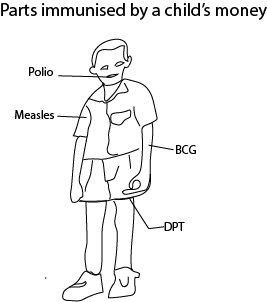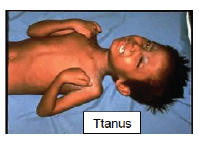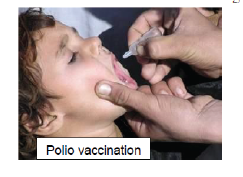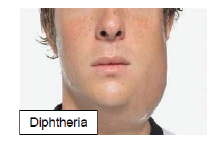
Diseases, infections and immunization – Upper primary science

DISEASE AND INFECTION
A disease is the medical condition of the body or the mind being unwell. An infection is caused by the presence of disease causing organisms in the body. Illness or sickness is the suffering experienced when one gets a disease. Diseases cause illness.
How are diseases or infections spread?
Infectious diseases are diseases that can be spread or passed from one person to another.
Infections or diseases can be spread through:
-
Insects
Many insects are carriers of germs that cause diseases. The insects pass the diseases when they bite or when they come into contact with food or water. Malaria for example, is transmitted through mosquito bites. The hairy legs of flies like housefly can carry cholera or typhoid germs to our food. Diseases carrying insects and animals are called vectors.
Common diseases and their vectors
Diseases vector
Malaria Female anopheles Mosquito
Sleeping sickness Tsetse fly
Dysentery Housefly
Cholera Housefly
Trachoma Housefly
Bilharzia water snail
-
Air
Air contains droplets of water, which may contain germs that cause disease. Disease germs in the mouth or nose can be removed from the body through the moisture breathed out, sneezed or coughed. Common cold, flue , tuberculosis, whooping cough and diphtheria may be passed in this way.
-
Dirty food and water
Food or water that contains germs is said to be contaminated water or food. When such food or water is taken by a healthy person, he/she may get sick. Typhoid and cholera are examples of sick that are transmitted in this way.
-
Direct contact
Some disease are spread through physical contact with sick people. Some diseases can also be passed indirectly by getting into contact with dirty things. Diseases passed by such contacts are said to be contagious. Small pox and tuberculosis can be spread through direct contact. Sexually transmitted disease are passed when people get into physical contact through sexual intercourse.
SEXUALLY TRANSMITTED INFECTIONS (STIs)
During sexual contact, diseases can pass from one person to another through the exchange of body fluids. Body fluids include blood, saliva, seminal and vaginal fluids. STIs (sexually transmitted infections) are also called STDs (sexually transmitted diseases) or venereal diseases. These are infections that are passed from one person to another through sexual intercourse. They mainly affect the genitals (sexual organs) some of the sexually transmitted infections disease are gonorrhea
Newly born babies can contract STI from the mother during child birth or pregnancy
Control of sexually transmitted diseases
- abstinence
- Proper use of condoms.
- Infected people should not have sex until they are treated.
- married people should only have sex with their partners only
Mode of transmission of STIs
Through sex intercourse
Gonorrhea
Causative organ: bacteria or gonococci
Symptoms
Male
- . pain when passing urine
- pus comes out of penis
Female
- .a little pain when passing urine and pus from vagina
- pain in the lower abdomen, menstrual, she may become sterile
- pregnant mothers pass it to fetus leading to child’s blindness
- Pus discharge from penis and vagina
Syphilis
Causative organism
Symptoms
- Sore on or in the genitals
- Rashes on the skin
- Pain in the joints, sore through, mild fever
- The infection in advance stage cause heart disease, blindness, insanity and death
HIV/AIDS
HIV is an example of sexually transmitted diseases. It is caused by tiny things called viruses, which are much smaller than bacteria. The virus destroys the body’s protective or defensive systems by invading and killing the white blood cells also known as soldier of the body.
HIV stand for:
- Human – the virus attacks humans
- Immunodeficiency – the germ destroys people immunity or ability to fight disease
- Virus – the disease – causing germ is virus.
HIV cause AIDS.
AIDS stands for
Acquired immune Deficiency syndrome
- Acquired – got from
- Immune – protection against
- Deficiency – lacking
- Syndrome – meaning a number of signs or symptoms, which collectively suggest an illness.
AIDS is a killer disease.
Methods of HIV/AIDS transmission
How does a healthy person get HIV?
HIV is transmitted in any of the following methods:
- Sexual intercourse is infected
- Blood transfusion of HIV infected blood to a person without HIV
- Through use of un-sterilized instruments used on infected person
- Mother may acquire HIV from the mother
- through the placenta
- durring delivery
- during breastfeeding
What is sterilization?
Sterilization is making something completely clean and free from living microorganisms through boiling or heating. Syringes, needles and blades can be sterilized in this way.
Other methods of sterilizing are; treating the instruments with steam, heating on an open flame or immersing in domestic bleach, 0r sanitizer.
Stages of development of HIV/ AIDS infection
After becoming infected by HIV, the disease may take a long time to show symptoms. Therefore, some people who appear healthy may be infected by the HIV virus which keeps on increasing or advancing.
- The window stage – This is the period immediately after the HIV gets into the body of a person. The person still looks healthy and if a test is carried out, no HIV infection may be traced. A person in this stage can infect others. In the person’s body the white blood cells are being destroyed, therefore gradually weakening the body’s defense system against diseases.
- Asymptomatic stage – The infected person looks healthy but when tested, the presence of HIV may be detected in the blood. The victim therefore tests HIV positive.
. Poor health or sickly stage – The infected person starts suffering from many different minor ailments that come and go. These ailments include coughing, tuberculosis, skin ailment, mouth sores and diarrhea. Outwards, the victim may still appear healthy.
- AIDS stage -The infected person suffers from many opportunistic diseases that do not seem to go away even though the patient is under medication. The person suffers from vomiting and diarrhea, tuberculosis, coughing, skin rashes, mouth sores and many other diseases which are collectively referred to as the AIDS disease, the person is much weaker
and needs assistance to do most things. - Death – These many diseases (AIDS) finally overwhelm the body which succumbs to death.
HIV testing
The test for HIV is done on the blood. The test looks for the body’s reaction to the invading HIV. This is a cheap, reliable and accurate way of finding out whether one is healthy (HIV negative) or infected (HIV positive). The only problem is that if a person is newly infected, between 3-6 months, the HIV may not have shown itself though it is inside the body and hence cannot be detected easily. People in this stage, which is referred to as the window period, are very dangerous because they think they are HIV negative and thus can infect many innocent people if they have sex or involve themselves in other risky behaviors with healthy persons.
HIV test doesn’t tell whether one has AIDS or not, but it tells one if they are infected with HIV. It tells somebody their HIV status, whether HIV positive or HIV negative
What does it mean if a person tests?
HIV positive
If a person tests HIV positive:
- The person is infected with HIV and can spread the virus to others during sex, through pregnancy, child birth, breastfeeding or if they donate blood which is then transfused into a healthy person.
The person may develop the AIDS disease in future (within 3 to 8 years of infection, for most people),
What does it mean if a person tests HIV negative?
If a person tests HIV negative:
- The individual has not been infected with or exposed to the HIV virus.
- The individual may be infected but they are still in the window period where the virus cannot be detected
It is advisable to take another test five months later to ensure that one was in in the window period.
Effects of HIV/AIDS
HIV/AIDS affects different levels of the society. It affects people as individual people as a family and people as a nation
Effects on the individual
- A person may be angry, be in denial and shock which could lead to
- One may suffer from various disease one after the other leading to poor
- Someone may be deserted by friend and family.
- It may lead to discrimination eve at places of work. It may also lead t loss of job in some places.
Effects on the family
- The family members may be angry.
- More money may be spent on the patient, thereby reducing the norm; family budget.
- The family may face a lot of hardship if the whole family depended on the patient for their daily basic needs.
- When the victims die, children are left as orphans.
- Elderly family members are burdened with the care of young children.
- In some cases very young children are left to fend for themselves.
Effects on the nation
- Hospital space and bed capacity in the hospitals may be reduced a majority of those infected occupy the
- Most of the medicine budget is spent on AIDS related drugs therefore there is very little money left to take care of other killer disease such as malaria and tuberculosis.
- The nation faces an increase in the number of orphans and eventually of street children.
- The country loses the young professionals, for example doctors, teachers, engineers, due to HIV AIDS.
CARE AND SUPPORT OF PEOPLE INFECTED WITH HIV/AIDs
People infected with HIV/AIDS need care and support such as:
Love and care
People living with HIV/AIDS should be accepted in the society. They should not be looked down upon. We can show love to such people through:
- Spending time with them
- Listening to them
- Comforting and consoling them.
- Serving them food and giving any other help when they cannot move about,
- Washing their clothing and beddings
- Constantly visiting them,
- Nursing them by giving them medicine, reminding them when to take medicine and washing the things they use to take medicine,
- Encourage them to go to hospital and even accompanying them.
- HIV/AID should not break up relationships between friends or family.
Medical care
People living with HIV/AIDS should:
- Take medicine and should strictly follow the doctor’s instructions,
- Avoid smoking and drinking alcohol,
- Have plenty of rest, since the body needs extra rest,
- Be active and engage in a activities like visiting friends or reading story books to avoid depression which may be caused by being idle,
- Avoid risky behavior that may lead to more infections related with HIV/AIDS and go for treatment from qualified health workers or doctors.
Adequate diet
- An infected person should:
- Have a balanced diet with
- Body building and repair foods such as peas, beans, eggs, meat, fish, groundnuts among others.
- Energy giving foods such as cassava, rice, maize, bread, potatoes.
- Protective foods with vitamins and minerals such as fruits and vegetables
- Avoid alcohol and cigarettes.
- Try to eat when they do not have the appetite. They should take small quantities of food but eat more often.
- Take liquid foods, especially if the HIV/AIDS patients have wounds in the mouth.
- If a person has diarrhea, he/she needs to take lots of drinks like plenty of water, juice, milk, etc f. It is better to take the oral rehydration solution (ORS). Oral rehydration solution is water with some salts. A salt sugar solution (SSS) can also be taken. After every diarrhea. A patient should take one full cup of the drinks
- Washing their hands with soap and warm water after visiting the toilet.
- Eating property cooked food.
- Drinking boiled or treated water and
- Living in clean surroundings such as:
- a clean compound with rubbish burnt often to keep away flies
- Using the latrines and toilets well all the time and covering the pit latrines after use.
Prevention of HIV/AIDS transmission
What is meant by prevention of a disease?
Prevention of a disease is taking steps to ensure that people who are not infected remain in that healthy state.
HIV transmission can be prevented through:
- abstaining from sex until after marriage,
- Married people should avoid having sex with other partners and be faithful to their spouses,
- persons who handle blood and other body fluids for example doctors and nurses should put on protective gear such as gloves,
- People who are taking care of HIV/AIDS patients, the soiled, blood stained or dirtied clothes and sheets or any other linen should handle them with gloves. These materials must be washed with plenty of soap and water then hung to dry in the sun. The radiation from the sun and dry conditions easily kill the HIV germs.
One should also avoid habits such as:
- Sharing personal items like tooth brushes, razorblades, or instruments used for ear piercing, nose piercing tattooing.
- Bad company or peers, who may lead to such risky behaviors as sexual intercourse, drug taking (sharing) a syringe for instance) and alcohol drinking. When one is under the
influence of drugs or is drunk, one not able to say no to sex. - Walking in isolated places. This may expose one to rape and it may lead to HIV transmission.
- Being in tempting situations that may encourage sex or even rape. Should
an unfortunate case of rape happen go for HIV test to ascertain you condition. - Using unsterilized medical equipment and any traditional instruments that
are used on many people. - It is however recommended that, medical personnel use disposable equipment, which are used only one on one person and then disposed of.
- blood to be used for blood transfusion should be screened thorough!; Infected blood should be disposed of
HIV/AIDS control
What do we mean by the term disease control?
Control of a disease is taking measures t ensure that a disease does not spread t the uninfected. Some ways of controlling HIV from spreading include:
- a) Mass education
Mass education refers to passing 01 information to many people at the same time in an organized manner. Mass education can be conducted through public rallies or barazas, group meetings, seminars, workshops, pamphlets, booklets, Newsletters and brochures, drama, games and shows (video and film).
- b) Campaigns through various media
To campaign is to carry out a planned or organized action to pass information to a large number of people. Campaigns on the dangers and spread of HIV/AIDS can be done using mass media outlets such as radio, television, newspapers and public film shows.
- c) Creating public awareness on HIV/AIDS
This can be done through organizing events where people learn about HIV/ AIDS.
Myths and misconceptions about HIV/AIDS
What are myths?
Myths are false beliefs. It means believing in things that do not exist or that are not real. Myths also mean stories that are passed down from old times or from old people to young people. The stories contain the beliefs of the community.
What are misconceptions?
Misconceptions are wrong ideas about something.
Some of the myths and misconceptions in various communities about HIV/AIDS are
- HIV/AIDS is a curse, spell or punishment for doing things that are taboo in the community.
Taboos are behaviors that are prohibited in society.
- HIV/AIDS is brought about by
Failure to inherit a dead relative’s wife leads to a curse that develops into HIV/AIDS.
Some herbs can cure HIV/AIDS. Some traditional customs like tattooing (making patterns or pictures on the skin) or scarification (forming scars on the skin) can cure AIDS when the bad blood that carries the disease is poured out of the body to the ground.
A widow must be cleansed by having sex after the death of her partner. Failure to perform the sexual act results into a curse which may develop into HIV/AIDS
If all members of an age group are not circumcised using the same instrument, this will weaken the age group bond.
A mosquito can transmit HIV from an infected person to a healthy person.
One can contract HIV/AIDS if they shake hands with or hug an infected person.
Sharing drinks and food with an infected person will spread HIV to the uninfected.
A witch doctor can perform some traditional rites using a concoction of herbs to lockout HIV/AIDS from a homestead and thus prevent the disease from infecting any close members of the family.
People with the ‘wicked-eye1 can easily be witch a person who then contracts HIV/AIDS.
Somebody can only contract HIV/AIDS from prostitutes (also called commercial sex workers) but cannot contract HIV/AIDS from certain groups of people such as small children, disabled people, or virgins.
If one has contracted HIV/AIDS and has sex with a young child, they will be cleansed and be cured from HIV/AIDS.
COMMUNICABLE DISEASES
Communicable diseases are diseases that can be passed from one person to another. The most common communicable diseases are malaria tuberculosis (TB). The methods of transmission prevention and control, symptoms and signs are shown in the table below.
| Disease | Transmission | Symptoms | Contr0l |
| Tuberculosis (TB) | • through inhaling air that has TB bacteria
• Drinking unboiled milk from an infected animal. |
• mild fever shown by a rise in temperature
• sweating night • Coughing, • Loss of weight and increased weakness • pain in the chest and upper back • coughing blood |
• Thoroughly washing your handkerchief with soap and hot water.
• seeking treatment immediately you notice any signs of disease • making sure that sick people finish the medicine prescribed by the doctors. They should take the full dose of medicine. • Immunizing babies with the BCG vaccine immediately after birth before going to school. |
| Malaria | • by the bite of a mosquito which has bitten sick person who is suffering from malaria | • fever
• Chills • Sweat • Headache • Vomiting Body and joint aches tiredness/ weakness |
• treating sick people immediately with the right dose of anti- malaria drugs
• clearing and draining stagnant water • pouring oil, on stagnant water to kill mosquito larvae. • spraying homes and surrounding with insecticides .sleeping under mosquito nets . treating mosquito nets with insecticides • . applying mosquito on exposed parts of the body |
Immunization
Immunization is giving medicine to protect the body against certain diseases. Protecting the body makes the body resistant to the particular diseases. The medicine is given in form of a vaccine.
The vaccine helps the body to fight and kill the organisms that cause diseases. The action of giving a vaccine is called vaccination. Vaccination can be administered by injections. Injection is introducing the vaccine into the body by using a needle mounted on a syringe. When a vaccine is given through the mouth we call it oral vaccination. A vaccination timetable is shown on the table below.
| Disease | Vaccine Age at vaccination Method of vaccination | ||
| tuberculosis (TB | BCG at birth | injection | |
| polio | OPV | at birth, 6 weeks, 10 weeks, 14 weeks | oral |
| diphtheria, tetanus,
whooping cough, -hepatitis B, meningitis |
DPT/HepB/HIB | 6 weeks, 10 weeks, 14 weeks | injection |
| Measles | Measles | 9 months | injection |
| yellow fever | yellow fever | 9 months | injection |
| •Vitamin A deficiency | vitamin A | 6 months | oral |
| tetanus | tetanus toxoid (T.T) | 3 months, 5 months, 9 months, booster at 4 years of age, then at 10-year intervals | injection |
| typhoid | typhoid | 6 months | injection |

Measles
Measles is a very contagious disease caused by a virus. It spreads through the air when an infected person coughs or sneezes.
Measles starts with a cough, runny nose, red eyes, and fever. Then a rash of tiny, red spots breaks out. It starts at the head and spreads to the rest of the body.

Measles can be prevented with MMR vaccine. The vaccine protects against three diseases: measles, mumps, and rubella. CDC recommends children get two doses of MMR vaccine, starting with the first dose at 12 through 15 months of age, and the second dose at 4 through 6 years of age. Teens and adults should also be up to date on their MMR vaccination
Tuberculosis
The vaccine for tuberculosis is called BCG is given at birth on the left lower arm between the elbow and the wrist.
Tetanus
It is also called lock jaw because it causes stiffness of joint especially joints of the jaws.
It is caused by bacteria found in soil and enter our bodies through open wounds, and cuts.

Poliomyelitis/ Polio
It is caused by a bacteria, it attacks the nerve system and muscles causing paralysis in some parts of the body like arms and legs.
The vaccine is administered through the mouth at birth.

Diphtheria
It is caused by a bacteria
It causes breathing problems and affects the throat of children below ten years.
The neck swells with rashes on the skin.

Whooping cough/pertussis
It is caused by a bacteria which spreads through air
Cough lasts for weeks or months and may kill the child
Types of immunity
- Active immunity occurs when our own immune system is responsible for protecting us from a pathogen.
Active immunity is acquired through
- Suffering from disease and curing from it or;
- Vaccination
- Passive immunity occurs when we are protected from a pathogen by immunity gained from someone else such as a baby may gain passive immunity
For Revision Questions and answers Download PDF below
Diseases, infections and immunization -Upper primary
Sponsored by The Science Foundation College + 256 753 802709
Compiled by Dr. Bbosa Science +256 778 633 682

Thanks for making complex ideas easy to understand. Electronics
You have a gift for explaining things. 500 ka redeem code
Take the first step toward your medical career with MBBS Direct Admission in Uttar Pradesh.
Streamline your application process with MBBS Direct Admission in Sikkim.
Get extra perks by sharing your Raja Luck Invite Code with friends.
Experience the thrill of color prediction with Goa Games, offering engaging gameplay and exciting rewards.
Learn how to effectively use the Referral Code to maximize your benefits on TS EARN.
Make the most of recommendation rewards by sharing the Diu Win Invite Code.
Take part in non-stop enjoyable and excitement on bdg win game.
Experience seamless gameplay and interactive features with 55 club app.
The customer service at Joshital is top-notch– fast responses and seamless purchasing experience!
With many trainee loan frauds, it’s excellent to have a trusted source like Student Loan Forgiveness Programs Everything You Need to Know.
For fast transactions, try a Property Dealer Near Pari Chowk Greater Noida on this site!